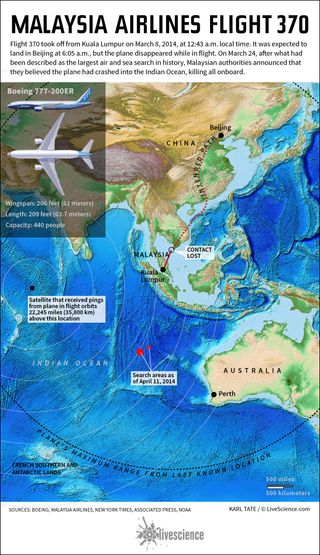
More Pings Heard in Search for Flight MH370

An Australian vessel searching for the Malaysia Airlines flight in the Indian Ocean picked up more pings Tuesday that could be from the missing aircraft, Australian authorities said Wednesday.
The ship detected two signals that could be coming from the airplane's black box, retired Air Chief Marshal Angus Houston said in a news briefing in Perth, NBC News reported. The new signals lasted a total of 12 minutes, and came a few days after officials announced that they had heard the first two signals, on Saturday.
The pings come from a man-made device, not a natural source, Houston said. But the plane still has not been seen. "We've got to lay eyes on it," Houston said, according to NBC. [Facts & Timeline About Malaysia Flight 370]
The black box pinger's batteries have already exceeded their 30-day battery life, so searchers are racing to find the device before its batteries die.
Malaysia Airlines Flight 370 disappeared shortly after takeoff on March 8, enroute from Kuala Lumpur to Beijing, with 239 people onboard. Satellite data suggest the plane flew westward over the Indian Ocean, where search efforts are now focused.
The search area for the plane is now about 29,000 square miles, or about the size of South Carolina, CNN reported. That's still much smaller than the previous search area, however. All four signals were detected within 17 miles of one another, and have gotten progressively weaker. The first signal lasted two hours and 20 minutes, and the last one was only seven minutes.
"It's certainly encouraging that more signals have been detected," Pentagon spokesman Adm. John Kirby told CNN. "There is still much work to do, however."
Sign up for the Live Science daily newsletter now
Get the world’s most fascinating discoveries delivered straight to your inbox.
Follow Tanya Lewis on Twitter and Google+. Follow us @livescience, Facebook & Google+.

